A flat tire can be a real headache. It's an unexpected interruption to your journey, and it can happen anywhere.
But what if you could fix it quickly and get back on the road?
That's where a flat tire sealant comes in.
Flat tire sealants are a convenient solution for emergency repairs. They work by sealing punctures in the tire's tread, allowing you to continue your journey.
However, it's important to remember that this is a temporary fix. After using a sealant, you should follow up with a professional tire repair or replacement.
Choosing the right sealant can be tricky. There are many factors to consider, including your tire size, type of vehicle, and type of tire.
This guide will help you navigate these choices and find the best flat tire sealant for your needs.
See also:
Understanding Full Synthetic vs Synthetic Blend
Brief Introduction To Flat Tire Sealants
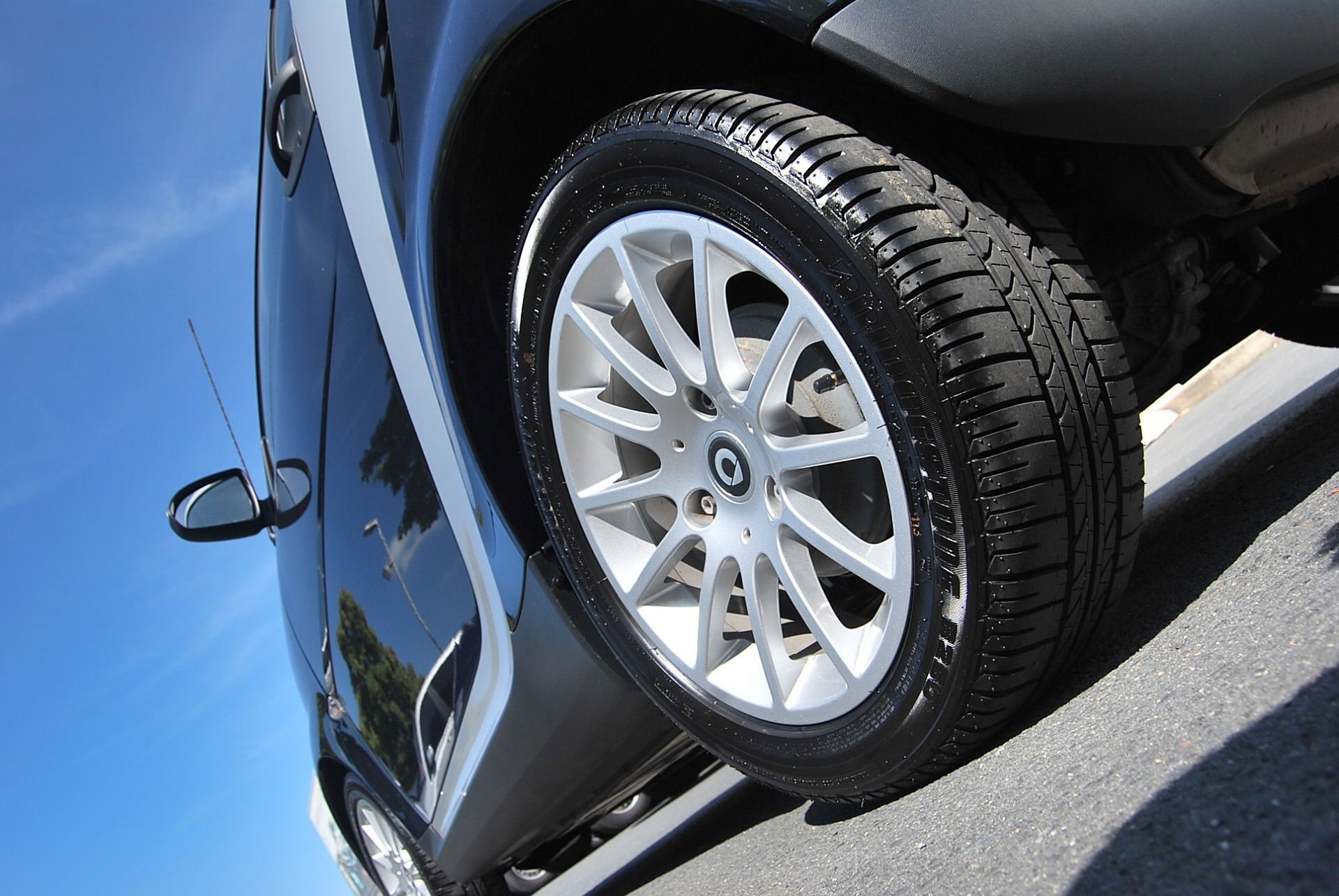
Photo Credit: Pixabay.
Tire sealant is a remarkable substance designed to rescue drivers from the inconvenience of punctures. It usually comes in a compact canister, packed with a liquid or gel-like formula.
When applied, the sealant moves into the tire and transforms into a self-repairing barrier. Its texture is viscous, almost glue-like, enabling it to fill the cracks or gaps caused by punctures.
Flat tire sealants are crucial maintenance accessory for drivers who value readiness. They offer a quick fix for unexpected punctures. These products are generally easy to use and store. You can often find them in compact spray cans or liquid bottles.
Sealants are excellent additions to roadside emergency kits. They ensure you're not stranded with a flat tire. Yet, it's essential to remember their limitations. A sealant may not fix every type of puncture, and its solution is temporary.
How Do Tire Sealants Work?
Tire sealants contain a gooey formula that clings to the interior of your tire. This material seeks out punctures and fills them.
Inside the tire, the sealant works through a process of coagulation. As the tire rotates, centrifugal force distributes the sealant evenly along the inner surface.
Upon encountering a puncture, the sealant hardens, creating an airtight patch over the damaged area. Some tire sealants include small particles or fibers that enhance their sealing capabilities, binding with the liquid to reinforce the repair.
Often infused with chemicals that resist heat and pressure, tire sealants can endure the intense conditions within a moving tire. They are typically vibrant in color—ranging from neon greens to deep blues—making it easier to spot during application.
Their aerosol or liquid delivery system ensures a simple yet powerful application process. Once the sealant gets inside the tire, air pressure helps push it into the damage. This creates a temporary patch over the puncture.
By blocking the hole, the sealant stops air from escaping. This allows you to continue driving safely for a short distance.
The Six Types Of Tire Sealants
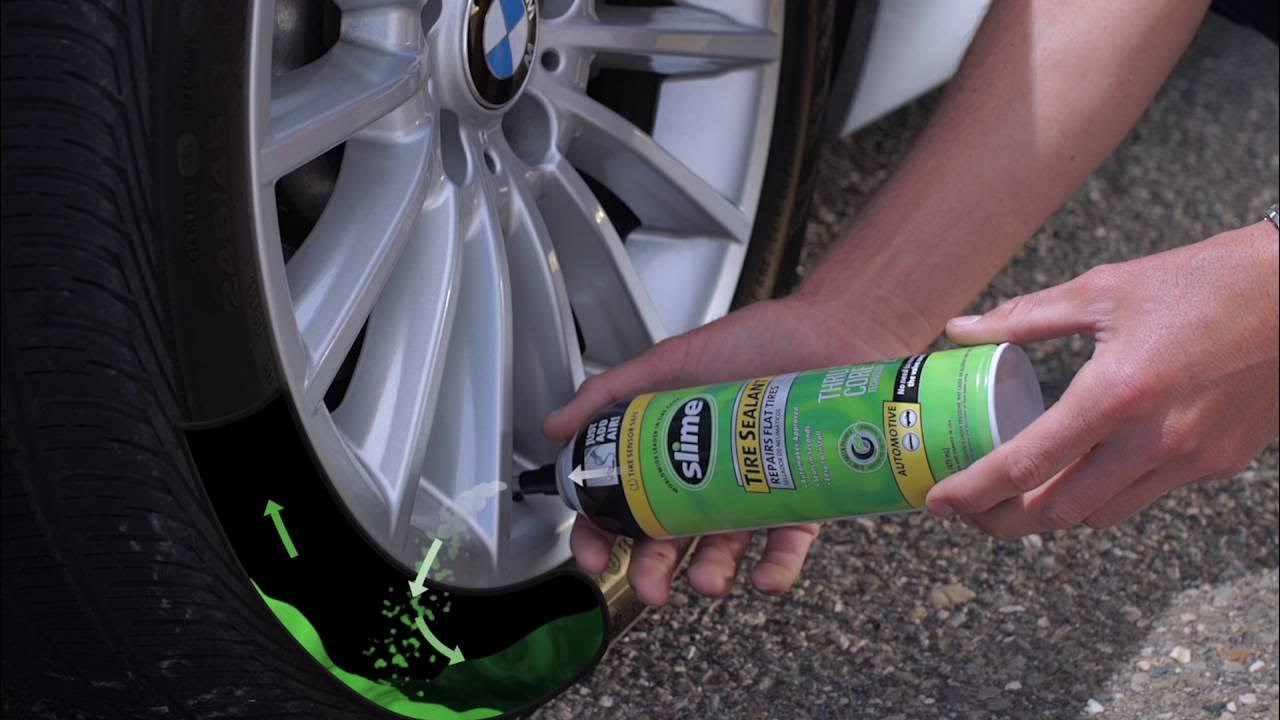
There are several types of tire sealants available on the market. Each has unique features and applications. Tire sealants come in several types, each suited to specific situations and needs. Here’s a breakdown:
- Temporary Emergency Sealants: These are designed for quick, on-the-go repairs. They can temporarily seal punctures and allow you to drive to a repair shop. Often sold in aerosol cans, they’re easy to use and perfect for emergencies. However, they’re not a long-term fix. The Slime Emergency Tire Repair sealant is a popular choice for quick, on-the-go repairs.
- Pre-Installed Sealants: These are applied inside the tire during installation. They remain dormant until a puncture occurs, at which point they activate to seal the hole. These are often used in bicycles, motorcycles, and off-road vehicles. The NoTubes Tire Sealant is a well-known option for tubeless tires, often pre-installed to provide continuous protection.
- Water-Based Sealants: Ideal for vehicle owners who prioritize eco-friendliness, these sealants are non-toxic and easy to clean from the tire. They are effective but may not handle larger punctures as well as other types. OKO Water-based Tire Sealant is designed for permanent use and is eco-friendly.
- Latex-Based Sealants: These are commonly used in tubeless tires, especially for bicycles. The latex provides a strong and quick seal for small punctures, but it may dry out over time and require periodic replacement. The Hutchinson Protect’Air Max Latex Tire Sealant is ideal for tubeless bicycle tires and provides strong sealing capabilities.
- Heavy-Duty Sealants: Designed for industrial or off-road vehicles, these sealants can tackle larger punctures and harsher conditions. They’re often more durable and long-lasting than standard sealants. The Ultraseal Extreme Grade tire sealant is tailored for industrial and off-road vehicles, offering robust puncture protection.
- Aerosol-Based Sealants with Air: These not only seal punctures but also inflate the tire simultaneously. They are especially handy in emergencies where you don’t have a pump or spare tire on hand. The Fix-A-Flat Aerosol Emergency Flat Tire Repair and Inflator combines sealing and inflation for emergency situations.
Choosing the best type depends on your vehicle and specific needs. Familiarity with each type's advantages can guide your decision.
Factors To Consider When Choosing A Tire Sealant
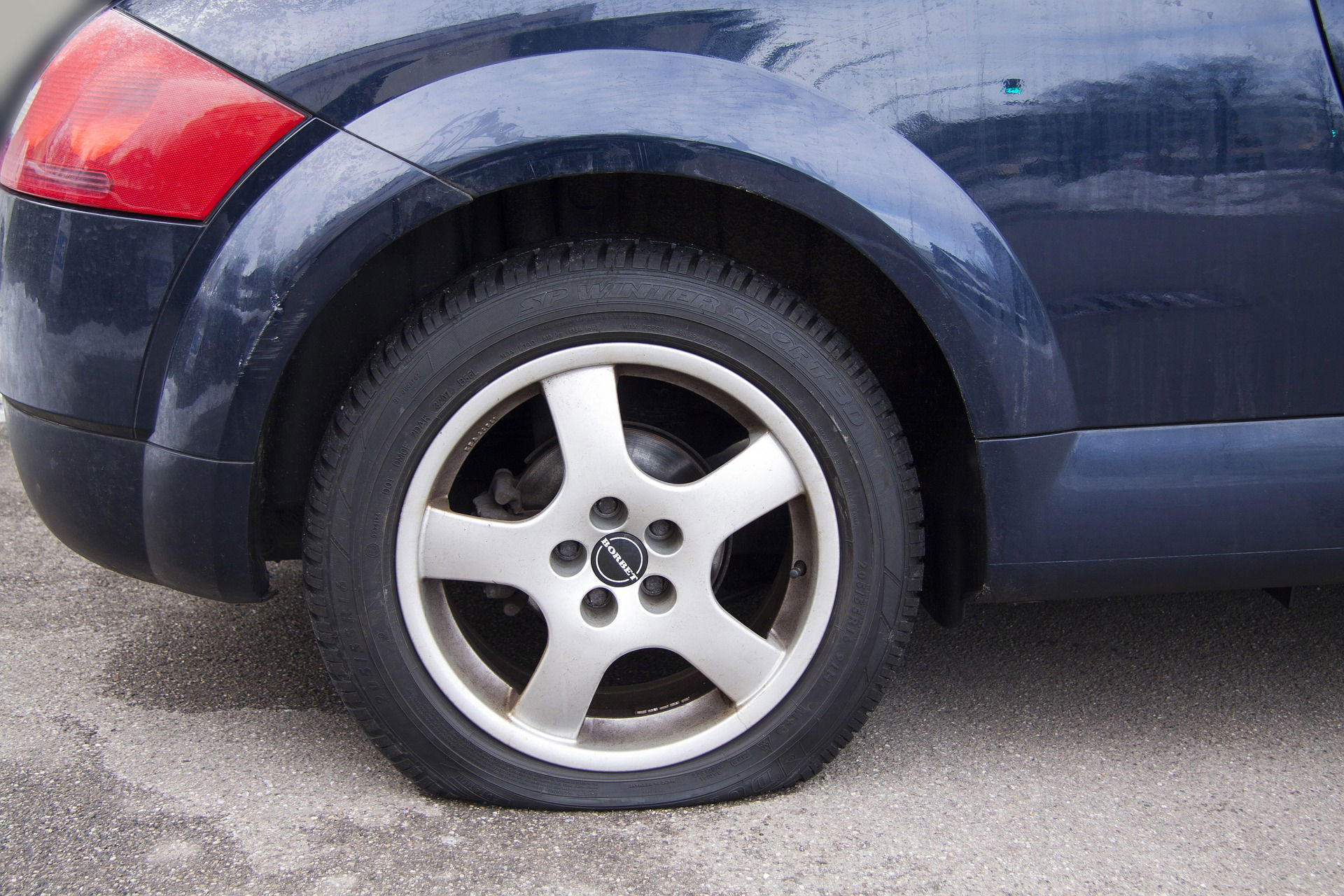
Photo Credit: Pixabay.
Choosing the right tire sealant can make all the difference. It's important to consider several factors to ensure effectiveness.
The type of vehicle you own greatly influences your choice. Different sealants are designed for different types of vehicles and tire sizes.
Think about the environment in which you'll be using the sealant. Extreme temperatures can affect some sealants' performance.
Consider how long the sealant can maintain its effectiveness. Some options are more durable than others, offering extended protection.
Key considerations for choosing a tire sealant include:
- Purpose of Use: Is it for emergencies, ongoing protection, or heavy-duty applications? Emergency sealants are temporary, while pre-installed or heavy-duty sealants provide long-term solutions.
- Type of Tires: Ensure compatibility with your tire type, such as tubeless, tube-type, or specific vehicle tires (bicycles, motorcycles, cars, or industrial vehicles).
- Sealing Capability: Check the sealant’s ability to handle different puncture sizes. Some are effective for small punctures, while others can tackle larger holes.
- Ease of Application: Look for user-friendly options. Aerosol-based sealants are convenient for quick fixes, while liquid sealants might require extra steps.
- Durability: Consider how long the sealant lasts after application. Some sealants are temporary, while others provide extended protection.
- Temperature and Weather Resistance: Ensure the sealant can perform under extreme conditions, especially for off-road or industrial use.
- Non-Toxic and Eco-Friendly Options: Water-based sealants are safer for the environment and easier to clean out of tires.
- Repair vs. Inflation: Some sealants inflate the tire while sealing, which can be a lifesaver in emergencies when you lack a pump.
- Cost and Value: Balance the price with the quality and features offered. A higher cost might be justified for heavy-duty or long-lasting sealants.
- Reusability and Maintenance: Consider whether the sealant requires regular replacement or if it stays active over time, as in pre-installed options.
It’s important to weigh these factors with care. For example, water-based sealants may be sufficient for some tire sealing needs and serve as an eco-friendlier option, but might not provide the level of robustness for your specific tire sealing requirements.
See also:
How Rising Living Costs Are Changing Car Maintenance Habits in Australia, the US, and Canada
Vehicle And Tire Compatibility
Again, not all sealants are suitable for every vehicle. Vehicles have specific requirements, and so do tires. Ensure the sealant you choose is designed for your vehicle type and tire size. Some sealants cater to bikes, while others focus on cars or trucks.
Sealant Longevity And Performance
Sealant longevity is crucial for effective repair. Some products only offer short-term fixes, while others can last longer. Evaluate how well a sealant performs under various conditions.
You want one that works well despite temperature changes. Long-lasting performance means less worry during long drives. A reliable product ensures peace of mind.
Environmental And Safety Considerations
Environmental impact is increasingly becoming a deciding factor for consumers. Some sealants have eco-friendly formulas, reducing harm to nature. You might want to confine your search to non-toxic options.
This protects both you and the environment. Safe products will often mention these features on their label. Additionally, ensure the sealant poses no risk to your tire's integrity. A safe sealant shouldn't cause further damage.
Step-by-Step Guide To Using Flat Tire Sealants
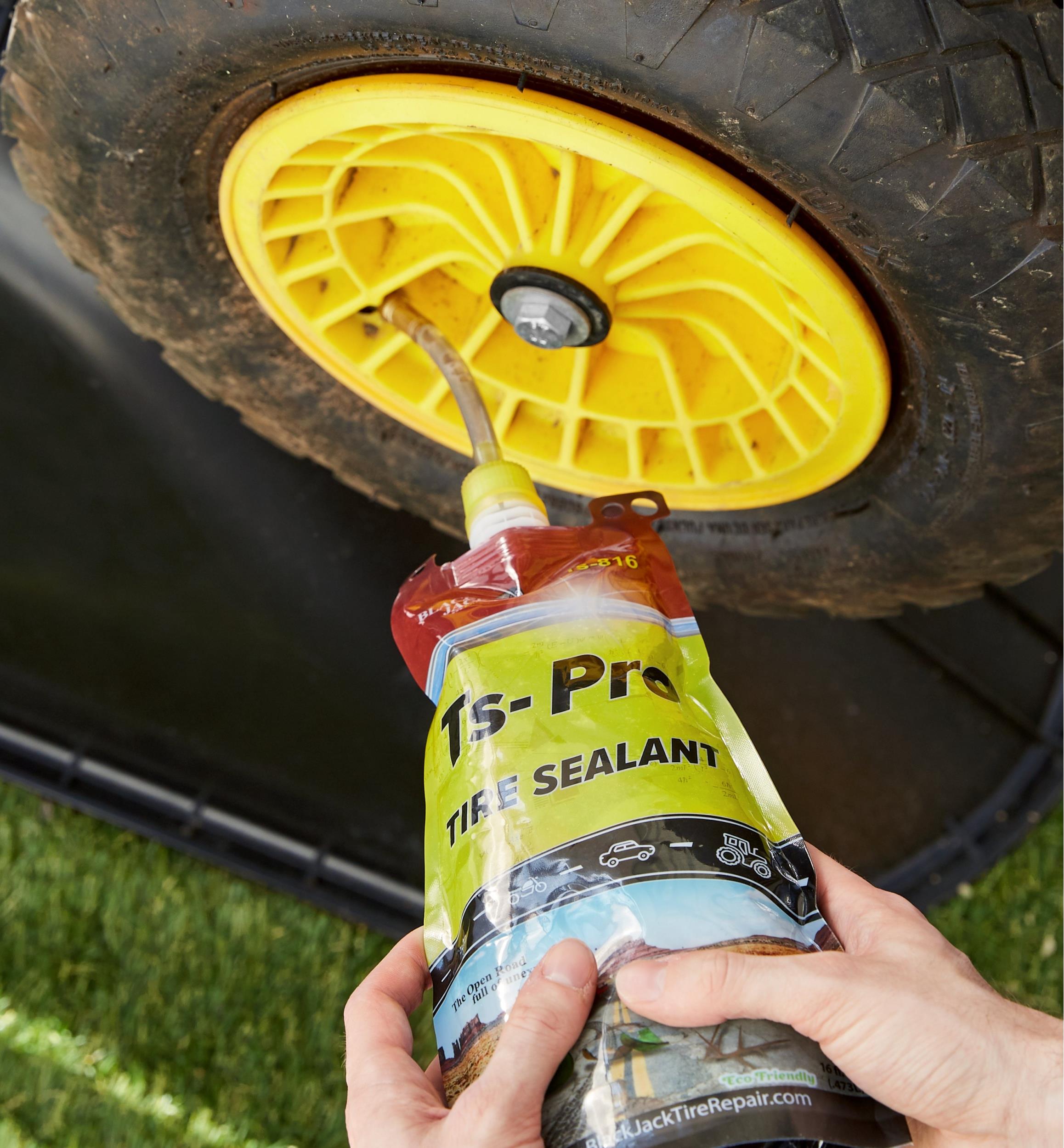
Fixing a flat with a sealant is straightforward but requires careful steps to ensure success. Before starting, gather everything you need. This includes gloves and a tire pressure gauge.
In addition to this guide, follow the instructions on the product label closely, as each sealant may have slightly different steps. That said, here’s a comprehensive step-by-step guide to effectively using flat tire sealants:
Step 1: Ensure Safety First
- Pull Over Safely: Move your vehicle to a flat and safe area, away from traffic. Turn on your hazard lights to alert other drivers.
- Inspect the Tire: Locate the puncture or damage. Make sure the issue is within the tire's tread and not on the sidewall, as sealants are often ineffective for sidewall damage.
Step 2: Prepare The Tools
- Grab your tire sealant (such as an aerosol can or liquid sealant).
- If using an aerosol sealant that also inflates, confirm it's compatible with your tire.
- Ensure you have a jack or wheel chocks to stabilize your vehicle, if needed.
Step 3: Remove Obstacles (If Necessary)
- If there's a nail or similar object lodged in the tire, do not remove it unless the instructions specifically advise you to do so. In most cases, the sealant works better if the object stays in place temporarily.
Step 4: Position The Valve
- Locate the tire’s valve stem and remove the valve cap.
- Position the puncture so it’s facing downward (or at least near the bottom). This helps the sealant flow to the damaged area more effectively.
Step 5: Attach The Sealant
- Shake the sealant can vigorously for 30 seconds to activate the formula.
- Attach the nozzle of the sealant to the valve stem firmly.
- If you’re using a sealant that also inflates, ensure the nozzle is airtight before proceeding.
Step 6: Inject The Sealant
- Press the release button or trigger on the sealant can to inject the product into the tire.
- Allow the can to empty fully (if required) to ensure enough sealant fills the tire.
- Keep an eye on the tire; many products will inflate it to a safe pressure as part of the process.
Step 7: Reinflate The Tire (If Needed)
- If the sealant does not include an inflation feature, use a portable air pump to inflate the tire to the recommended PSI level (check your car's manual or the sticker on the driver’s side door frame for guidelines).
Step 8: Rotate And Distribute the Sealant
- Drive the vehicle slowly for 1–2 kilometers (around 1 mile). This allows the sealant to spread evenly inside the tire and fully seal the puncture.
Step 9: Check The Seal
- After driving, stop and re-check the tire pressure.
- If the tire is holding air properly, the sealant has worked. Otherwise, you may need to reinflate the tire or seek professional assistance.
Step 10: Get Professional Repair
- Remember, most flat tire sealants are **temporary solutions**. Visit a professional tire repair shop as soon as possible for a permanent fix or to replace the tire if necessary.
- Inform the mechanic that you’ve used a sealant, as some products can leave residue that needs cleaning.
Pro Tips:
- Always read the specific instructions provided with your sealant product, as some steps may vary slightly.
- Keep a portable air compressor in your vehicle for situations where sealants don’t include an inflation feature.
- Check the expiration date of your sealant regularly to ensure it’s still effective when needed.
Pros And Cons Of Using Flat Tire Sealants
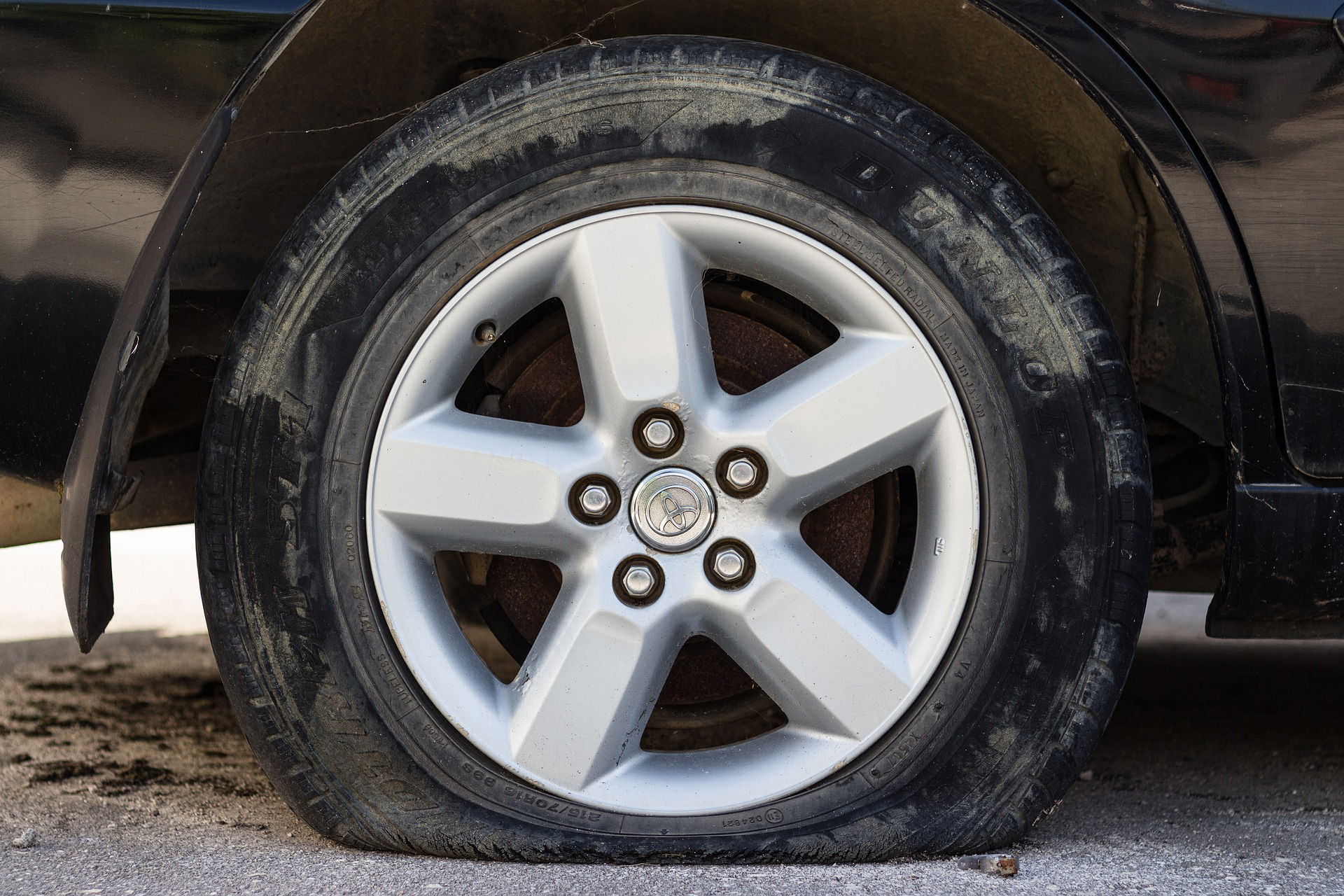
Photo Credit: Pixabay.
Flat tire sealants offer convenience and speed. They allow for quick on-the-go tire repairs. This can be a lifesaver in emergencies. However, sealants are not permanent solutions. They only provide a temporary fix. Eventually, you must repair or replace the tire.
Here’s a balanced look at the pros and cons of using tire sealant:
Pros
- Quick and Convenient Fix: Tire sealants provide a fast and simple way to repair punctures, especially in emergencies. They allow you to temporarily patch the issue without needing tools or expertise.
- Portability and Accessibility: Sealants come in small, easy-to-carry containers, making them practical to store in your vehicle for unexpected situations.
- Cost-Effective Solution: Using a sealant is often cheaper than calling for roadside assistance or replacing the tire immediately.
Cons
- Temporary Nature: Tire sealants are not a permanent fix. They are meant to get you to a repair shop, and relying on them for long-term use can lead to additional tire damage.
- Limited Effectiveness: Sealants may not work for large punctures, sidewall damage, or issues caused by rim damage. They are best for small tread punctures only.
- Potential Tire Damage: Some sealants can leave residue inside the tire, making it harder to clean or repair properly later. They may also affect tire pressure sensors in modern vehicles.
In a nutshell, sealants provide a useful, albeit short-term, fix a flat solution.
Top-Rated Flat Tire Sealant Brands
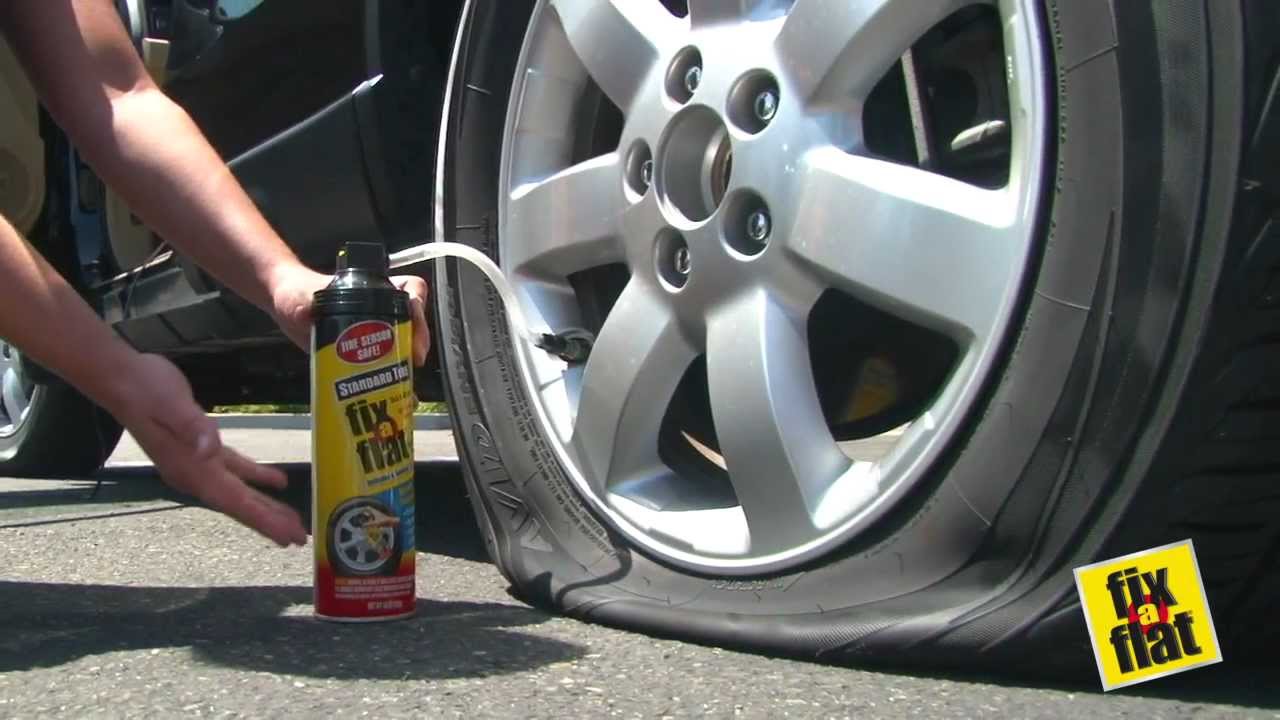
Reliability is a crucial factor when choosing a tire sealant. On this count, several brands consistently receive high praise from users.
Popular options include Slime, Fix-A-Flat, and Ride-On.
Slime tire sealants are well-known for versatility. They work in various tire types, from cars to bicycles. Their formula is designed to be non-corrosive.
Fix-A-Flat is another crowd favorite. It's praised for ease of use and effectiveness. Their aerosol cans make application straightforward.
Ride-On sealants offer another reliable choice. They focus on performance, enhancing tire balance. Customers often highlight its ease of use and reliability.
Final Thoughts On Choosing The Best Flat Tire Sealant
Choosing the right flat tire sealant can be a lifesaver in emergencies. These products offer convenient temporary fixes for unexpected punctures. However, it's crucial to follow up with professional repair. Consider the type of vehicle and tire when selecting a sealant.
Not all products fit every situation or tire system. Researching brands and understanding sealant limitations will help make informed decisions. Ultimately, having a flat tire sealant on hand adds peace of mind. It's a practical addition to your vehicle's emergency kit. Be sure to regularly check and replace expired products.
Note: The mention of specific brands in this article is for informational purposes only. Cars and Horsepower is neither endorsing nor recommending any particular product, and we have not received compensation for including them.